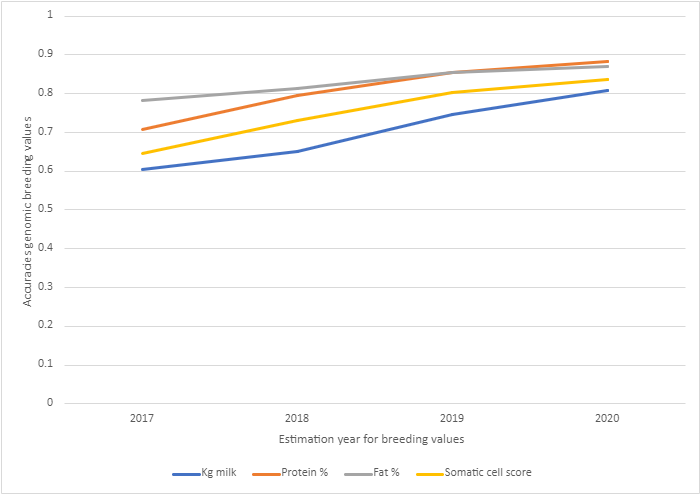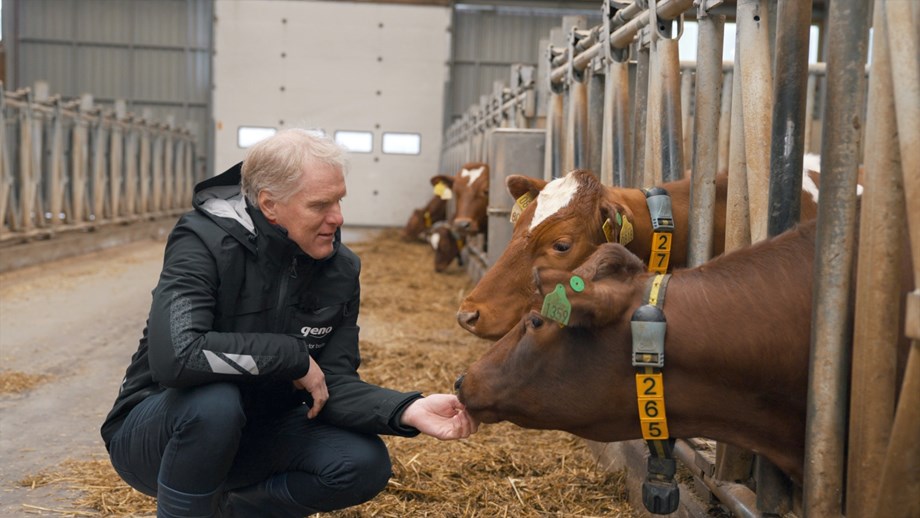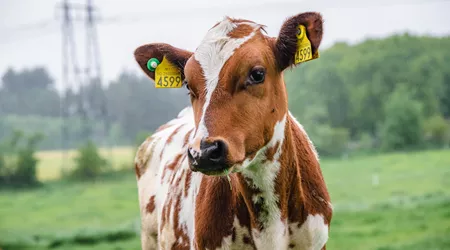Article by: Håvard M. Tajet - Chief Technology & Innovation Officer, Geno SA & Norwegian Red
The size of the breeding progress is determined, among other things, by the accuracy of the breeding values. The accuracy of the genomic breeding values was the big question before the genomic selection was implemented in the Norwegian Red (NR) breeding in February 2016.
Genomic Selection (GS) accuracy depends on several factors:
- Choice of Genomic Selection (GS) Methodology: Geno chose the top-tier "single-step" methodology, pioneering its use in cattle breeding worldwide.
- Population Inbreeding Levels: The Norwegian Red (NR) breed faces a challenge here, as highly inbred populations tend to offer greater reliability. Fortunately, NR has a very low level of inbreeding.
- Population Structure: NR maintains a robust population structure. Elite and test bulls have been evenly distributed across most herds, and no isolated subpopulations exist.
- Phenotype Quality: The health recording system ensures exceptional data quality, meeting international standards.
- Number and Linkage of Genotyped Animals: At implementation, approximately 18,000 animals in the NR population were genotyped. While not excessive, the genotyping of progeny-screened bulls significantly bolstered the system's effectiveness.
Geno currently incorporates approximately 220,000 genotyped animals into its breeding value calculations, a substantial number on the global stage for a breeding company. This increase in selection intensity, transitioning from 10-15 elite bulls out of 115 test bulls to 45 elite bulls from a pool of 8,000 preselected genotype candidates, has more than offset the decrease in accuracy associated with the bulls. Additionally, the generation interval has been reduced from 5.5 to 3 years, further contributing to these positive developments.
Increase in accuracy of genomic breeding values
With a substantial genotyping pool exceeding 200,000, it's no surprise that the accuracy of genomic selection (GS) breeding values has seen a remarkable improvement.
Figure 1 illustrates this enhancement in genomic accuracies for key traits such as milk quantity, protein percentage, fat percentage, and cell count

The accuracies are established by examining the correlations between the GS breeding values of bulls before they sire any daughters and the values they reach after having at least 1,000 daughters with recorded observations (phenotypes).
For example, consider the enhancement in accuracy for milk quantity, which has surged from 0.6 to an impressive 0.8, marking a remarkable 33% increase. Likewise, for fat and protein percentages, accuracy has soared to 0.9, approaching levels typically observed in smaller groups of offspring. It's worth noting that there are very few bulls with no daughters after 2020 but more than 1,000 daughters by 2023. The full extent of accuracy in these cases will become more evident in the coming years. Nevertheless, there are strong indicators suggesting that the current breeding values in August 2023 will continue to grow in accuracy.
GS accuracy for other traits falls within the range of 0.7 to 0.85. While we've analyzed the development of accuracy for numerous traits, the scope of our findings exceeds what we can present in this article.
Summary:
When it comes to exterior characteristics such as udder, teats, and legs, the accuracy in 2017 ranged from 0.3 to 0.65. By the calculation year 2020, these values had risen to levels between 0.6 and 0.8. As for the GS accuracies in 2020 for various traits, there are numerous properties to consider. It's reasonable to expect that, for young GS-tested calves in August 2023, these securities will lie within the range of 0.7 to 0.85.
Embracing genomic testing since June 2017 has dramatically improved the precision of breeding values for heifers and older cows. Prior to GS, significant selection was extremely challenging due to low accuracies. Today, by genotyping heifer calves just as we do with bull calves, we've made substantial progress. We strongly recommend that all milk producers establish efficient procedures for ordering genomic testing for female animals, preferably when they are young calves.
With a genomic test, farmers will gain an excellent foundation for crafting an effective breeding plan, selecting the right bull combinations, and making informed choices, such as using REDX on the best animals and beef cattle semen (possibly beef cattle Y-semen) on the others.



